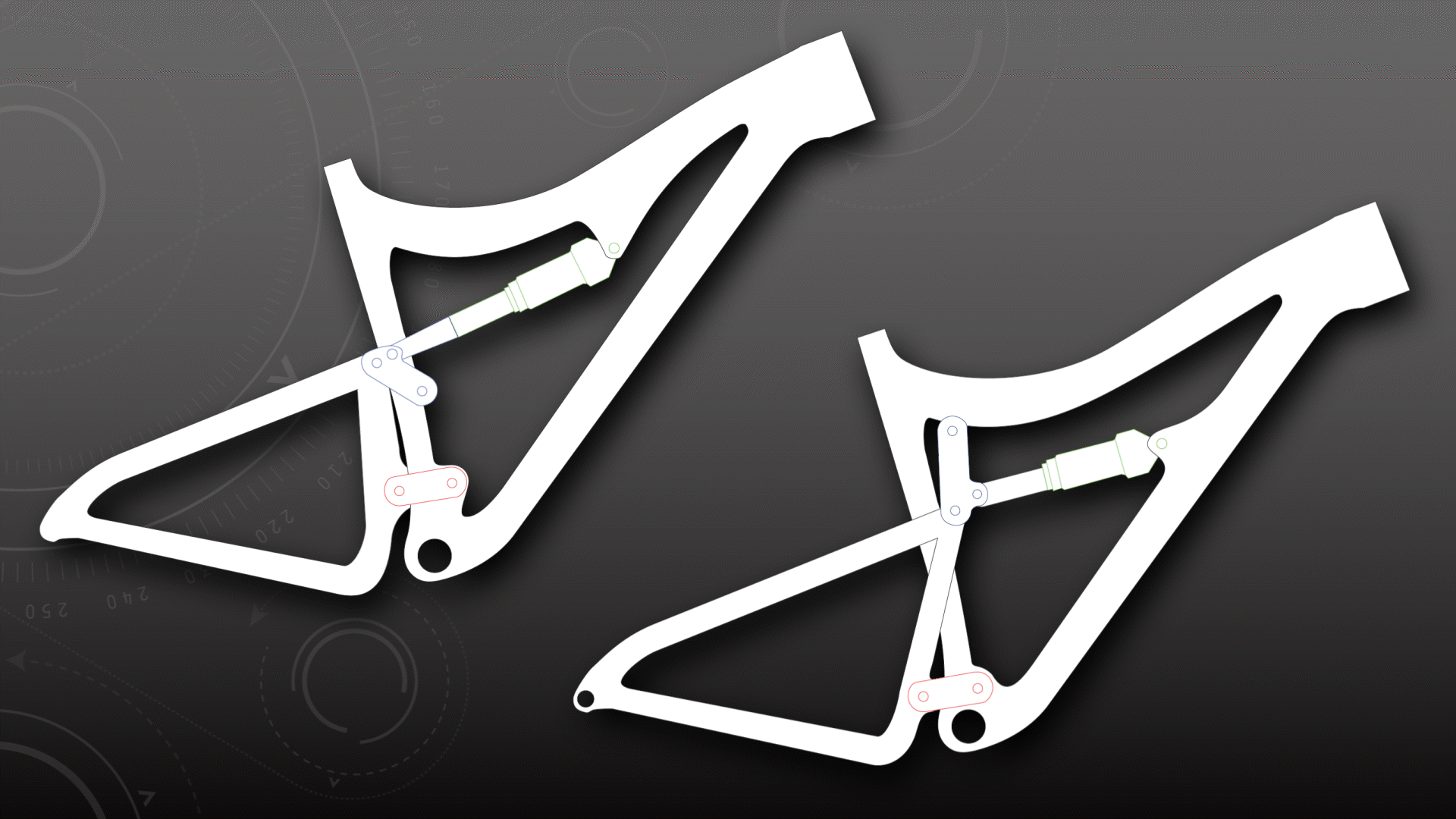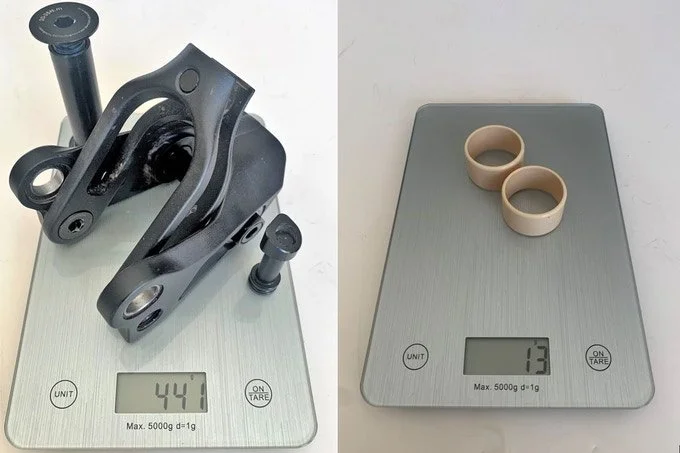Analog Suspension
... delivers predictable kinematics, improved reliability, chassis rigidity, light weight, 2x water bottle and long dropper capacity, and more.
Analog suspension was conceived from the realization that on most 4-bar suspension systems the upper link undergoes large angular displacement, which can cause the linkage’s instant center¹ to move wildly, and for the leverage rate to get all funky². This can cause the suspension’s behavior to change unpredictably throughout its travel, which in turn results in a loss of control for the rider.

The slider in the Analog system does away with the short upper link parts, yet functions like an infinitely long link. Doing so removes that angular displacement problem altogether, this helps keep migration of the Instant Center under control throughout the travel. The suspension performance is thus controlled throughout its travel resulting in a predictable, surefooted ride.
¹[sometimes called the virtual pivot point.]
²[scientifically speaking]
There are several side-effects to replacing the upper link assembly with a slider, happily these are all good or great:
Increased chassis stiffness, because there are fewer parts to flex.
Reduced free-play in the chassis, because there are fewer pivots and bearings in the system. Using only 3 pivot sets, and low leverage ratios minimizes the stack-up of backlash in the system.
There are no shock eyelet bushings, which are a common free-play, stiction, and maintenance problem area on most other suspension designs.
Significant weight saving – typically in the 200-600g range.
Capacity for the longest dropper seat-posts, because the seat-tube runs straight all the way to the bottom bracket.
Room for two water bottles in the front triangle, there's also a third bottle location under the down tube.
Low 2:1 suspension leverage ratio, which reduces the loads on the frame, shock and oil.
Longer shocks, which allow improved spring and damper design, for optimal suspension performance.
Improved reliability, because there are fewer parts which could break.
Improved reliability, because there are fewer seals where water or mud can penetrate, the seat tube shields the shock from rear-wheel-splatter, and the shock's wiper-seal cannot be opened by side-loading (fork-type bushings resist that). Also the top surface of the lower link is angled so that any mud falling onto it is deflected away from the drivetrain.
Reduced environmental impact compared with other suspensions because fewer parts are made.

